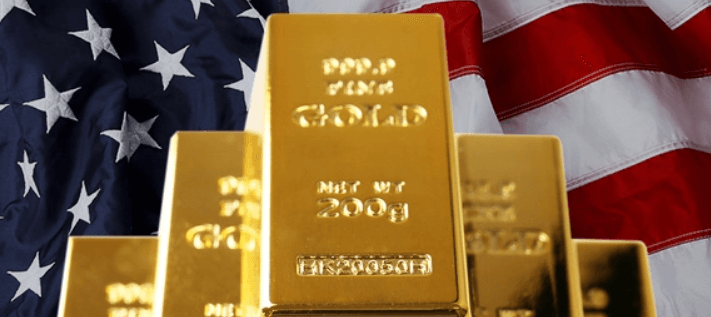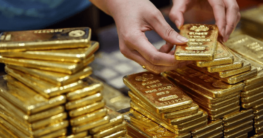How American politics and the US economy affect gold prices
In the past, governments determined a country’s currency or fiat money through the value of gold according to the gold standard. A government would set a fixed price for gold and buy and sell it at that price, which would then determine the currency’s value.
Today, the gold standard is no longer in use. Instead, fiat money retains its value through a government’s economic performance and political and social stability.
But gold continues to have a relationship with the US dollar—and it’s a complicated one.

Start your gold investment journey
It’s essential to keep an eye on US economics and politics to better understand when to invest in gold. Make use of the best trading platforms in Singapore to get started in trading online.
Brief history of the ties between gold and the US dollar
At the end of World War II, Western powers developed the Bretton Woods Agreement, a framework for all global currency markets. Under the agreement, the value of all national currencies was tied to the US dollar.
Once the agreement ended in 1971, gold and the US dollar began to have an inverse relationship—as the US dollar weakened, gold prices rose.
As gold is priced in the US dollar in today’s context, the appeal of gold is primarily affected by American politics and the US economy.
Political tensions and economic crisis in America
Think about your financial goals. Are you trying to earn enough money to afford big-ticket items or aiming for a comfortable retirement?
Since the state of an economy and governance affect fiat currency’s value, gold typically reveals the US’ political and economic conditions.
Major events like a presidential election significantly impact gold prices. The political and economic uncertainties, heightened risks, and changing market expectations during this period cause the stock market to become more volatile.
Then there are catastrophes like the COVID-19 pandemic, which caused the US economy to plunge into recession with over 15 million unemployed, debilitating government debt, and record-high coronavirus cases.
During times of recession, the US government tends to implement fiscal stimulus, which involves lowering tax and interest rates to stimulate economic growth. However, lower interest rates also lead to a depreciation of the US dollar and cause rising inflation.
As liquid assets like stocks and bonds are more vulnerable to market fluctuations, gold can act as a hedge against inflation, being an entirely different asset class. Similarly, since gold is priced in US dollars, a weak US dollar will make it cheaper for investors holding other currencies to purchase gold.
Amid US political tensions and an economic downturn, gold prices soared by 25% in 2020. Since investors consider gold to be a “safe haven”, buying gold helps reduce investment portfolio losses and provide returns amid times of crisis.
Feds regulation of monetary policies
The Federal Reserve (Feds) is the central banking system in charge of US monetary policies. As the Feds’ regulation of monetary policies determines the money supply and interest rates, it directly affects the US economy.
If the US economy is experiencing a recession, the Feds may ease its monetary policy, and interest rates will fall. If interest rates decrease faster than inflation, real interest rates will go down, causing gold to become more bullish. (Real interest rates are inflation-adjusted interest rates.)
A combination of low interest rates, weakening US dollar, and rising inflation will increase gold’s appeal to investors.
Hence, if the Feds take a dovish stance for monetary policy—supporting low interest rates—gold prices will rise, and investors are more likely to shift their investments to gold.
US Treasury yields as safe-haven assets
US Treasury yields are the total amount of money earned by owning US Treasury bills, notes, bonds, or inflation-protected securities. They are seen as the safest form of investment by investors as the US government backs them up.
Rising yield suggests anticipation of a strong economy, which means that interest rates will increase along with yields. Gold becomes less attractive to investors as the opportunity cost of putting money in gold also increases.
For instance, the US 10-year Treasury yield rose in the beginning of February 2021, causing gold to compete against assets with low bond prices, and making it more expensive to hold. In such a scenario, investors are more likely to invest their money in US bonds instead of gold, limiting gold as an inflation hedge and putting pressure on gold prices.



No Comments found